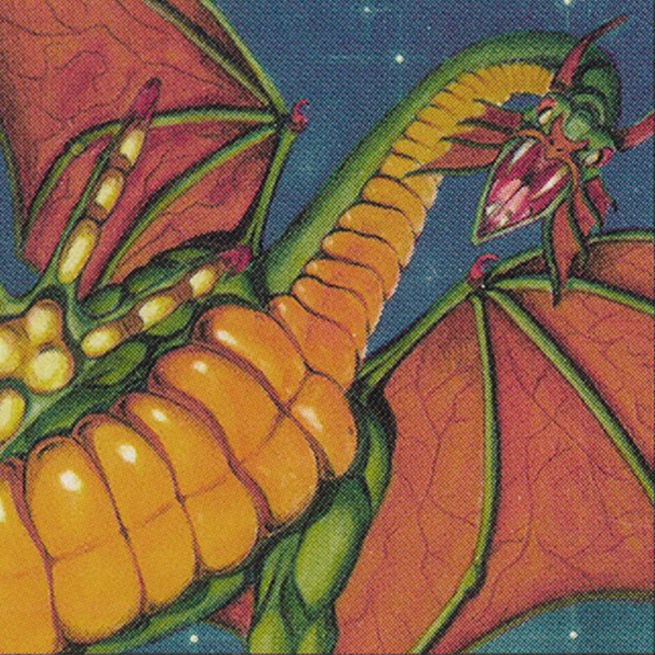Welcome to our artists interview series - There's no Magic without art-, where we talk to artists about their work on Magic: the Gathering.
Today we share with you our talk with Jason Rainville, and here's what he told us.
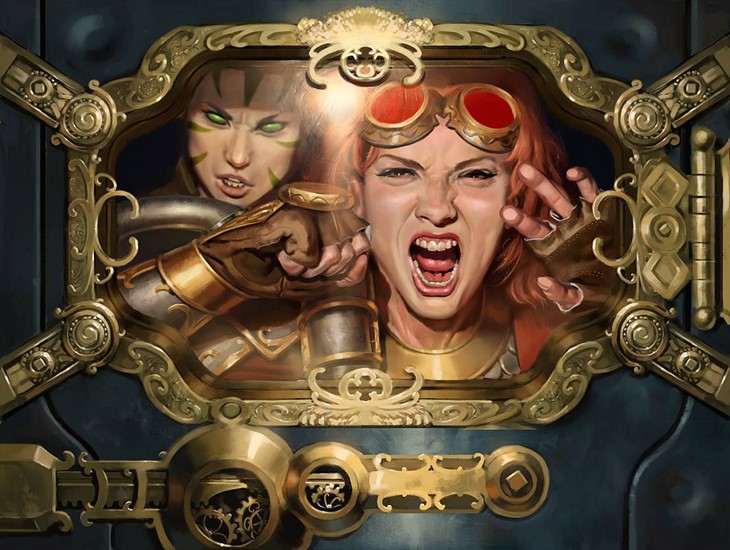
Jason, tell us about how you got started working with Wizards of the Coast.
I was working for various table-top publishers at the time when a call for artists came from then-WotC art director Jon Schindehette. The call was specifically for concept artists. I applied to the position of character/costume concept artist as those I feel are my strong suits. While word came back that I didn't get the job, they offered me Magic The Gathering cards!
In which way does the small card format condition the creative process, and how do you work around it?
While the size of the art when printed is very small, I think that sense of immersion and awe can actually be very easily achieved if fans are viewing the art during pre-release, when larger hi-res images are being shown. otherwise, simple and cohesive compositions are well-suited to create impact at a small size.
The horizontal orientation of the image lends itself to large sweeping vistas and in certain cases scenes with many characters. The problem (for me) comes when a non-planeswalker brief calls for a single character. It's very hard to create an imposing figure in a landscape-orientation. Still, with a little bit of planning, perspective, maybe even a dutch angle, it's possible to work around the limitations of the card.
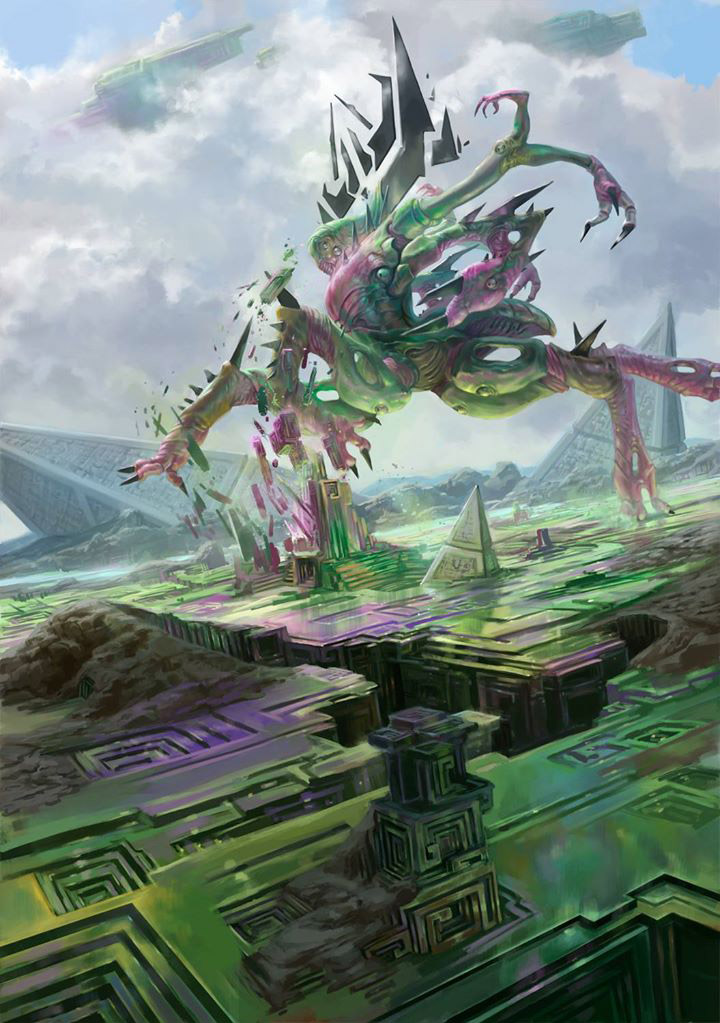
You painted new art for the iconic Cryptic Command. It's interesting how you took the element from Wayne England's art and incorporated it as a central piece of your work. When creating new art for an existing card, does this increase the pressure on your side? How does this process differ from creating art for a new card?
I think there's a bit of misunderstanding about the creative process and relationship between artist and art director with this card specifically; the iconic spell was part of the brief. I knew relatively little about the previous card and the art director called for the mage to be casting that spell at the viewer. Most everything else was left up to me, but I can't take credit for the implementation.
I CAN however take credit for doing a small amount of research into blue mana and the card, trying to create something as mysterious as possible. I settled on a mage so shrouded in layers of swirling fabric that her figure (just like her intentions) were lost to sight.
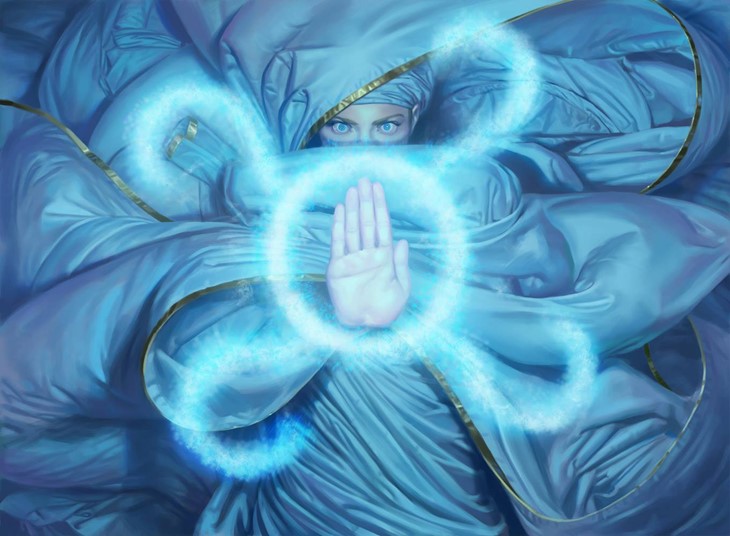
From your descriptions of the work behind Oracle of Dust and Thunderbreak Regent, you seem to spend a lot of time preparing for each painting, doing multiple studies and sketches. Can you give us a brief description of your work process, and how you got there?
I really like front-loading my decision-making as it means I can focus on each stage of the process without having to think too much the whole way through. Thinking is a tough and slow process, and I'd rather get it out of the way early so less of the image has to change further down the road.
Ideally I start with studies of the subject before work even begins. As my schedule grows more and more hectic, this is a luxury I'm not often able to indulge in.
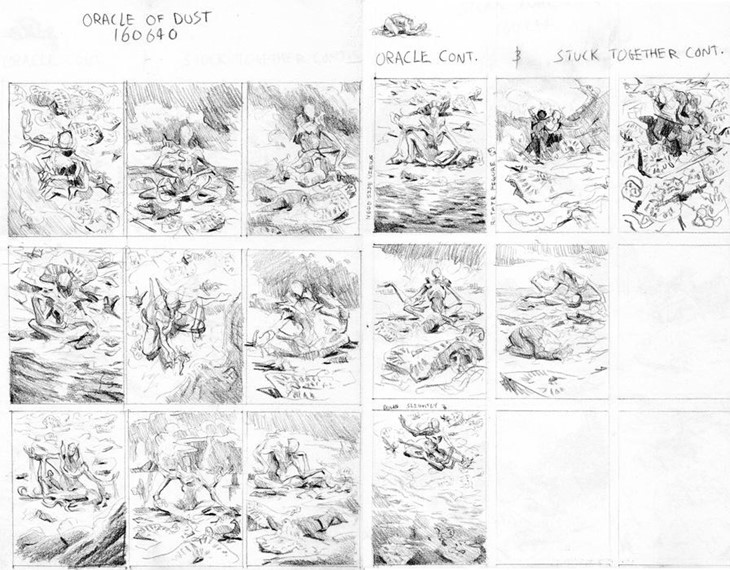
I always start with a page of usually 21 thumbnails (small, simple sketches) done in graphite. I like to start in pencil as it forces me to keep things simple.
Going right to digital might allow me to get lost in the details to early on. I select the best ideas from those thumbnails, bring them into Photoshop and create 1-3 colour sketches that I then send off to the art director. Once one is selected/approved, I look for and shoot reference photos (usually of myself).
I then resketch the entire image in a tight digital line sketch. I paint the colours underneath this sketch, and then begin painting overtop. this rendering, though only one "step" can take up fully half of the overall time I spend on an image.
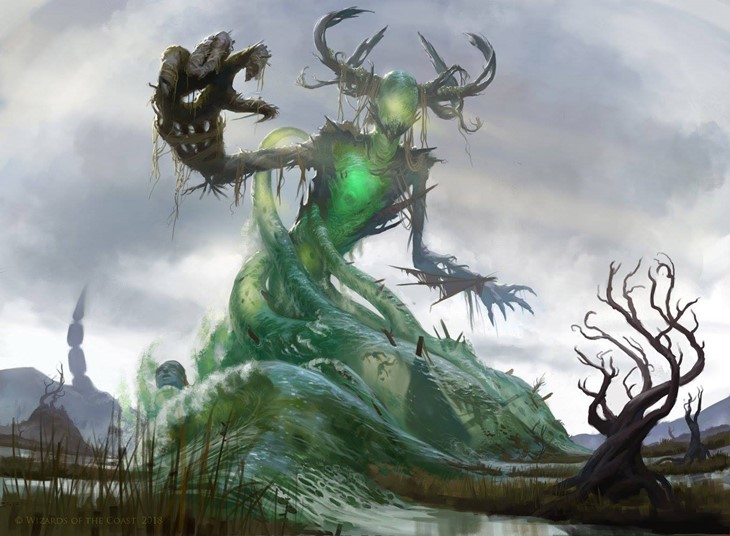
Art descriptions give artists a rundown of the card, they must imagine it and bring to life. Would you share with us some of your most challenging commissions?
While I'd like to recount a brief that was particularly outlandish or challenging, it's almost never the brief that gives me trouble, it's the subject matter being presented.
I feel like I still have a difficult time simplifying certain subjects in a piece, and anytime I've been asked to include a lot of foliage or cities I've usually had a harder time.
As for the hardest brief, I think it was Violent Impact for the Amonkhet set. It was just very difficult to show a smashed chariot that still read as a chariot. Drawing fantasy chariots are hard enough when they're intact!
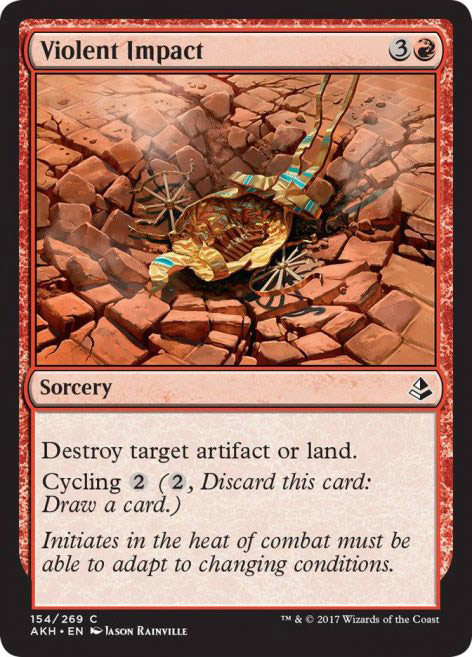
Did you ever receive an art description that made you say "I know exactly how I'll paint this!"?
Yes! But it's not released yet so I can't really talk about it. Like I said Violent Impact proved difficult after a while, but I suppose something that made me do a double take was the description for Eldritch Evolution. it just seemed so gross and wild that I had no idea where to start sketching it!
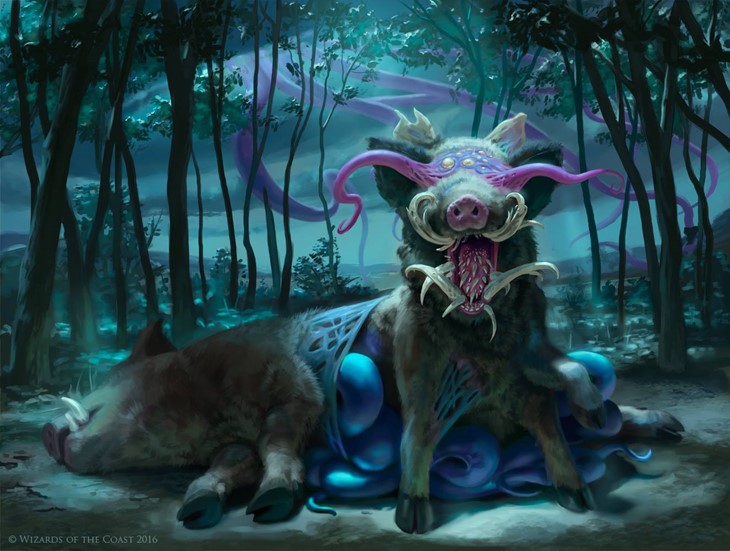
Rekindling Phoenix is an amazing painting and one of the most played cards in Standard. Can you tell us more about how this painting came to be?
Rekindling phoenix is actually one of the pieces I'm most sad about. I don't think it really came together and my disappointment is compounded by the fact that it's a very playable and popular card. It has to do with the fact that I'm not too great at drawing birds, or painting foliage and distant architecture. This one had all 3!
I wish I could have used one of my other sketch options for this one but I misunderstood the brief and painted the phoenix way too large at first. Just so this isn't a completely negative answer though; I had done some more dynamic views of the bird from the side, and in a much darker setting so that the fire would show better. unfortunately it was a little too far off of the brief and a different option was selected.
The concept-art for the phoenix was already established as well so I didn't do much to design it. Overall the piece came together relatively easily, but I just wish it was more realistic and defined.
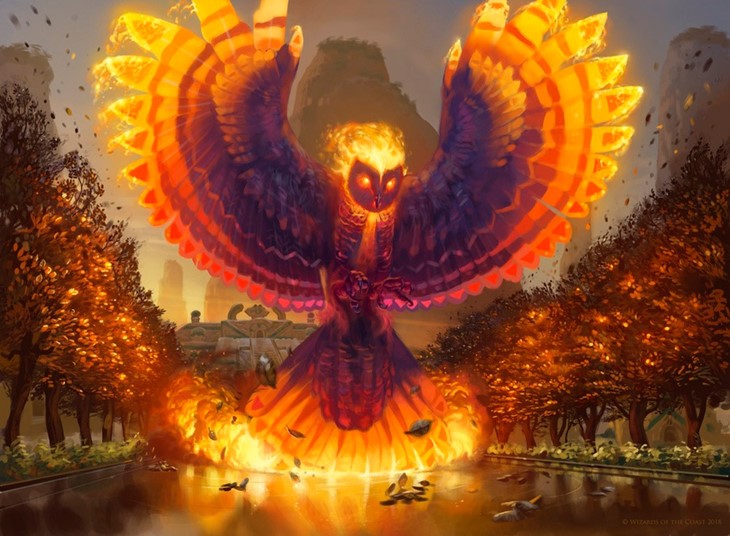
What's the most satisfying part of making art for Magic?
A few things; the art director-artist relationship is the best I've had, the ready-made worlds to illustrate are inspiring, and the built-in fanbase has made making secondary income a lot easier.
But really, it's the very enthusiastic fanbase that just loves to see good art and storytelling in the game they love. If I can fit some easter eggs (like the bat in Heir of Falkenrath) or extra effort (Oracle of Dust) in some cards, it'll get noticed and appreciated.
Seeing those bits of recognition, those positive comments from people who know this game/these worlds inside out really means something to me as someone who doesn't.
It makes it feel like I've really tapped into something and made an impact even while being more on the outside. Makes me feel like I'm a good artist to know how to elicit that response every now and again.
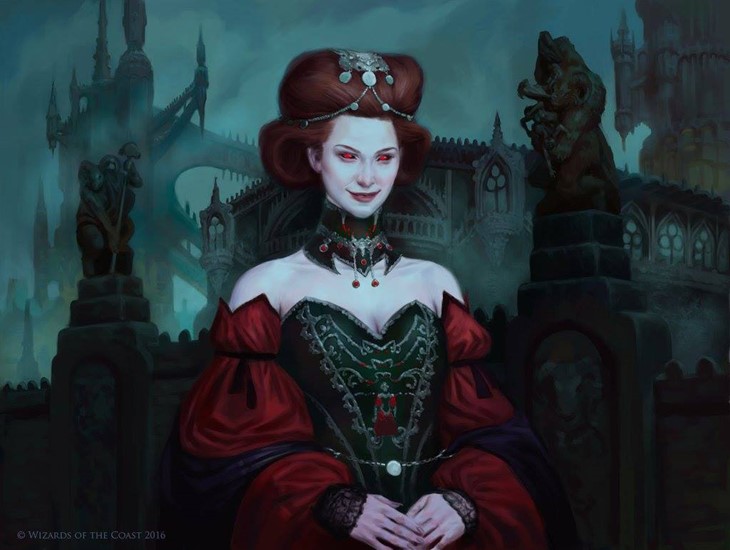
We want to thank Jason for his time and kindness, and for giving us this incredibly funny and inspiring interview. You can find more about Jason's work on his website, where you can buy amazing prints and sketches, or get one of your favorite cards signed.





